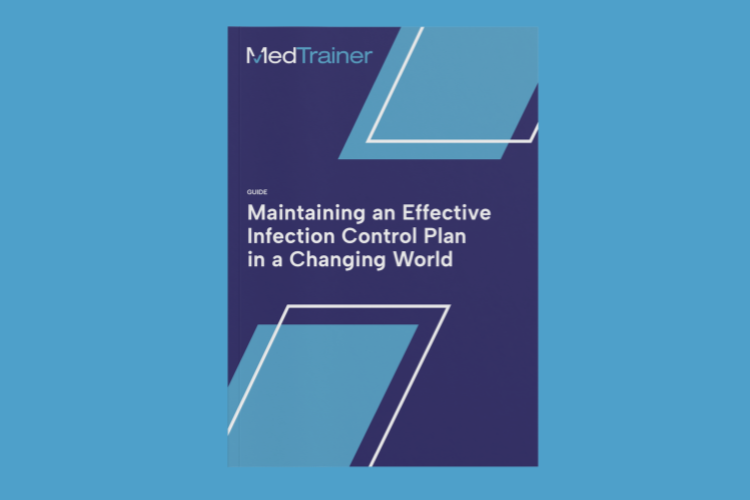Healthcare errors happen even with the safeguards in place to help prevent them. When mistakes occur, most organizations rate them on a 1-to-5 scale based on severity. In this blog, we’ll focus on what is a level 5 incident in healthcare and how compliance software helps organizations respond, evaluate, and mitigate future occurrences.
No Standard for Incident Levels
The concept of what is a level 5 incident in healthcare is not universally defined or standardized. The classification and severity levels of incidents can vary depending on the healthcare organization or regulatory body. Here’s a general understanding of incident severity levels commonly used in healthcare settings:
Level 1: Typically minor or near misses that have little to no impact on patient safety. These incidents may include minor errors or deviations from standard procedures that are quickly identified and corrected.
Level 2: Moderate in severity and may have the potential to cause harm to patients. These incidents may require some intervention or additional monitoring to prevent further harm.
Level 3: More serious and have the potential to cause significant harm to patients. They may require immediate intervention, investigation, and follow-up actions to mitigate the harm and prevent recurrence.
Level 4: Severe and have caused harm to patients. They often require a thorough investigation, implementation of corrective actions, and may involve significant organizational response and communication.
Level 5: While not a universally defined level, in some healthcare organizations, level 5 incidents may represent the most severe incidents that result in catastrophic harm or death to patients. These incidents, which may also be called “never events,” typically trigger a comprehensive investigation, involvement of regulatory bodies, and significant organizational response to prevent future occurrences.
Specific classification and severity levels may vary across different healthcare organizations or regions. Healthcare facilities often have their own incident reporting software and classification systems to ensure appropriate response and improvement in patient safety.
Big Penalties for Level 5 Incidents
The penalties imposed for level 5 healthcare incidents, or incidents of catastrophic harm or death to patients, can vary depending on the jurisdiction, regulatory bodies, and specific circumstances surrounding the incident. Here are some potential penalties that may be imposed:
- Regulatory Actions: Regulatory bodies, such as health departments or medical boards, may conduct investigations into the incident and impose various penalties. These can include fines, license suspensions or revocations for healthcare professionals involved, or even closure of the healthcare facility if serious deficiencies are found.
- Legal Consequences: In cases of severe harm or death, legal actions may be pursued by affected patients or their families. This can result in civil lawsuits seeking compensation for damages, including medical expenses, pain and suffering, and loss of income. In some cases, criminal charges may be filed if there is evidence of gross negligence or intentional harm.
- Reputational Damage: Level 5 incidents can have significant reputational consequences for healthcare organizations and professionals involved. Negative publicity, loss of trust from the community, and damage to the organization’s reputation can have long-lasting effects.
- Quality Improvement Requirements: Healthcare organizations may be required to implement specific quality improvement measures and corrective actions to prevent similar incidents from occurring in the future. This can involve changes in policies, procedures, training, and monitoring systems.
It’s important to note that the penalties imposed can vary widely depending on the jurisdiction and the specific circumstances of the incident. Healthcare organizations and regulatory bodies strive to ensure patient safety and prevent such incidents through continuous improvement efforts and adherence to best practices.
Level Down with Powerful Incident Reporting
Incident reporting, especially in large healthcare organizations, can be daunting and voluminous. Most large systems use some type of healthcare incident management software. Adding a digital incident reporting solution can help eliminate delays, identify trends, and resolve issues more quickly.
Beneficial functions to look for in a digital solutions include:
- Accessible-Anywhere Forms: A big time saver that allows employees at any location with an internet connection to quickly and easily report incidents from anywhere.
- Dynamic Form Building: Drag-and-drop fields allow easy customization and improve the collection of specific data to simplify workflows and identify trends.
- Anonymous Reporting: Employees may feel uneasy about reporting incidents involving co-workers. An online format that allows employees to anonymously complete and submit incident reports from anywhere can significantly improve escalation and resolution.
- Automated Escalation Workflows: The days of searching for paper incident reports and finding the people involved are gone. A digital escalation matrix can expedite the approval and review process.
- Severity Clarity: Legacy incident reports often fail to properly denote the severity of an event. Digital incident reports assign accurate and meaningful classifications that improve reporting effectiveness and trend identification.
MedTrainer offers all the functions listed above in an all-in-one compliance solution. Enhance your compliance programs with digital incident reporting solutions for any size organization. Contact us to learn more.

